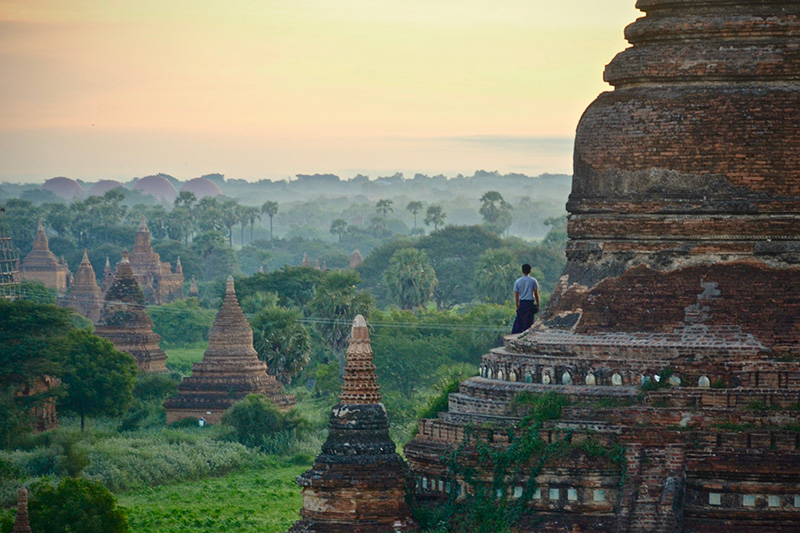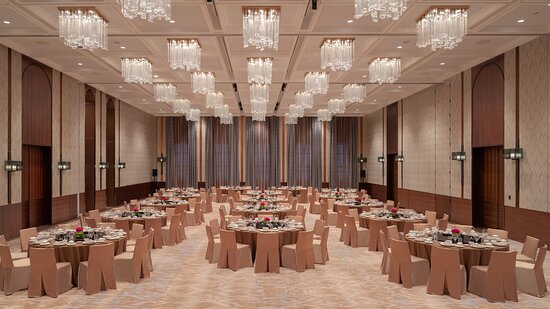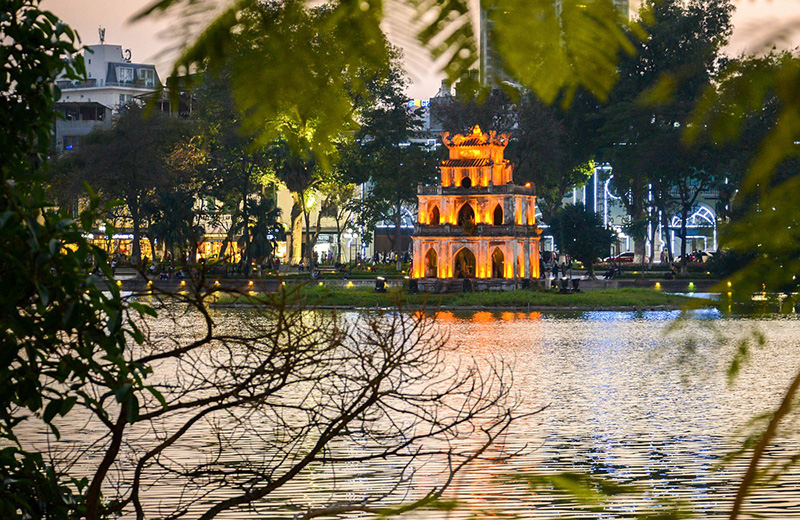
UNESCO World Heritage Sites In Laos
Wed, 09/16/2020 - 10:46

Laos has been more and more popular among international tourists because of its neutral beauty of the hills, mountains and the exotically attractive sites. And just recently, there has been one more destination – The Plain of Jars being recognized as the World Heritage by UNESCO. So why don’t we take this as a appropriate time to take a closer look in all world heritage sites in Laos?
Luang Prabang (accredited in 1995)
Luang Prabang was the first destination in Laos to be received this precious recognition in 1995. The reason why Luang Prabang was recognized by UNESCO as a world cultural heritage is mostly because of the unique historical value of this royal city, where it witnessed the rule of 63 kings. Besides, the city is also a magnificent and mysterious Buddhist center with thousands of temples, many of which are beautiful architectural accents, gilded with golden paint.
Not only that, Luang Prabang is also a peaceful, charming small city nestled on the green, poetic Mekong River and Nam Khan, surrounded by rolling mountains of clouds all year round.
In the past, this city was chosen to be the capital of the Lan Xang empire - the first kingdom of Laos (1350-1545). In the 16th century, although the capital was moved to Vientiane, Luang Prabang preserved its position as the cradle of Laos' diverse culture.
Coming here, you will agree with me that Luang Prabang is also a place to preserve the heritage of art and architecture: over 30 magnificent palaces, most built from the 14th century; about 40 ancient temples were built from different dynasties, each of which is a cultural work of high artistic value. Hundreds of antique wooden houses are designed in a very beautiful style, arranged in an orderly manner along the long and small streets, creating a lovely and still image.
Some must-go spots
Wat Xiengthong - an ancient royal temple built in 1560 and Wat May with 5-layer thick roofed tiles. They are two of the many beautiful tombs with excellent architectural features and decorative details. Wat Xiengthong has rich wood carvings and decorations.
A fairly famous spot is Wat Visounarath temple. In the past, many valuable Buddha statues were kept in the stupas. Due to the weather and the devastation of the weather, the towers have become ruined, and the Buddha statues have been moved to the Imperial Museum, including the famous golden Buddha statue Pra Bang Buddha, which had existed here during the period from 1513 to 1894.
Another attraction is Wat Vixum, built in 1513 and then rebuilt in 1898. It worships the largest Buddha statue in Luang Prabang. In the same architectural complex, Ta Mak Mo is famous for its excellent hemispherical architecture. Coming here, visitors can climb 328 steps of Phousi (the stone block placed on top of the temple in the center of Luang Prabang). One of the city's roofs that visitors can see from above Phousi is the royal tombs of the past - the impressive double cross in the combination of sophisticated architectural details of Laos and France. Now these tombs have become museums with many precious artifacts.
What to note when travelling here?
- If you are going in groups, you should catch tuk tuk and remember to bargain.
- The food in Luang is mostly baked, greasy and spicy. Except for noodles, the meal here has quite few green vegetables.
- Lao beer is one of the favorite drinks among tourists.
- You should enjoy dishes made from fish and shrimp caught in the Mekong River near Wat Xieng Thoong.
- Women should pay attention to dress discreetly when visiting temples and palaces.
- You should use sunscreen, hat or umbrella because the weather here is quite sunny and hot.
Wat Phou (accredited in 2001)
Wat Phou is the oldest temple in Laos, once the center of Hinduism, worshiping the god Shiva. By the 13th century, Wat Phou became a Buddhist temple and exists to this day, becoming one of the places preserving the values of Lao history and culture.
The temple has a unique structure that leads to a shrine where a linga bathes in water from a mountain stream. Looking at the temple architecture, visualizing the work of transporting large, carved stone patterns, Buddha statues, deities and then assembling them to form a large but harmonious, solid architectural complex on such high slopes, it must make us say “Wow”. They were such the ancient talented craftsmen poured so much effort and wisdom to create a magnificent Wat Phou.
It also has Crethapura citadel, the first capital of the Chenla kingdom. Archaeologists explain that at that time, there existed a road connecting Wat Phou with the capital of Angkor, about 100km away.
Today, Wat Phou is a Buddhist festival of the whole southern Laos, one of the biggest festivals in Laos, held continuously for 3 days on the full moon of the third lunar month.
Despite inevitable devastation of time, Wat Phou over a thousand years of history is still an attractive destination because of the magnificent beauty of unique architecture; by the mystical spiritual element of the sacred land associated with the aspiration of peaceful human life.
Despite being ruined by time destruction, Wat Phou still radiates the majestic vitality of a flourishing period of Hinduism.
The journey to discover Wat Phou
Starting in the center of Pakse district, visitors can rent a tuk tuk to go to the temple with many sacred historical values. The journey from Pakse center to Wat Phou is about 40km long and takes nearly 1 hour to move.
On the way to Wat Phou, visitors will cross many peaceful small villages under the lush green trees, walk through immense green rice fields, or pass through the hamlets lying by the river and meet the Champasak children who are laughing and frolicking around the road.
On the way to the main Wat Phou tower, visitors will walk through a path with more than 100 Linga pillars at the main gate leading to the main temple inside. At the end of the road, the two main temples, facing the east symmetrically, will be mysteriously revealed.
People often visit Wat Phou temple in the early summer or early winter to feel the peace and lightness inherent. In particular, if you visit here in the early morning or in the evening, the table is shrouded in mist and fog, then Wat Phou is lost in an enchanting archaeological site.
Plains of Jars (Xiengkhuang) (accredited in 2019)
The Plains of jar is a complex of 11 separate locations, where many ancient stone jars exist in Paek, Phaxay, Phoukoud and Kham districts of Xiengkhuang province. The stone jars of various sizes are carved from sandstone and granite, with very small to very large stone jars of up to 3.5 meters. According to the Vientiane Times, the above-mentioned stone jars are believed to be over 2,000 years old.
Stretching thousands of meters along the hill along the Muong Phuon plateau and towards the northern end of the Truong Son mountain range, the Plain of Jars is a 25 hectares wide cultural and historical site where 1,969 large and small jars are present.
From a distance, the Plain of Jars is like a chess board with pieces of jars that look very strange, only when they come close to see them scattered in groups, the stand, the tilt, the sink half, and mixed up but eventually you won’t see the imprint of an arranged game here with those stone jars.
Some flat stones were found near these jars, probably the lids, but for some reason they were removed or used for other purposes. Currently, only one jar has a lid to cover it up.
Jars field consists of 3 main areas including:
- The first point is about 15 kilometers southwest of the town of Phonsavanh in Xieng about southwest with about 300 stone jars.
- The second site is about 25 kilometers south of Phonsavanh and contains about 90 jars in range of two large hills.
- The third site is 35 kiometers from Phonsavanh district to the Southeast and there are about 150 jars.
Interesting stories revolve around the mysterious jars:
Lao people have many interesting ways to explain the stone jars.
- It is said that an ancient king named Khun Cheung waged a war against the enemy. After success, he made big jars to brew and make wine to celebrate the battle.
- There is also another idea that, because Xieng Khouang is located on the plateau with two distinct seasons of sunshine and rain - when the rain comes, the soil rot is still drought-prone, so the ancients had to make giant jars to water storage.
- It is puzzling that the mountains that are dozens of kilometers away from the Plain of Jars and to transport or carve the rocks into such huge jars must have gone through an extremely harsh process. In fact, these jars were made at different stages, even centuries apart. So far, although many different theories have been proposed by archaeologists to explain the origin and role of jars in the Plain of Jars, these arguments are not convincing enough.
- So far, the Plain of Jars remains a mystery to scientists. As determined by Julie Van Den Bergh - an archaeologist consulting with the United Nations UNESCO agency in a joint research project on the Plain of Jars with Laos, the mystery of the Plain of Jars is like the mystery of the statues on Easter Island (Easter in Chile - South Pacific), because no one has yet answered the question: Who made these jars? When do they do it? What for?
Will it be a mystery that will never be solved?
What to note when visiting the Plains of Jars
Because it is a potentially dangerous area due to mines and bombardment since the war time, visitors are only allowed to visit 3 places around Phonesavanh town: location 1 is Ban Ang with about 250 jars, location 2 - Cho Sen with about 100 jars and location 3 - Ban Sua also has about 100 jars (from the town of Phonesavanh in order of 12, 23 and 28 km). However, it is estimated that each year the Jars field attracts a million tourists, of which international visitors account for 60%.
At present, the Plain of Jars is ranked among the 7 most mysterious wonders of the world that humanity has not yet been able to decode. With what the Lao Government and UNESCO are doing, it is hoped that the entire Plain of Jars will soon be "liberated," so that visitors can freely touch the rough but vague rocks, feel the deep mysteries sinking into the distant past.
Have you been to any of those above famous attractions? If you haven’t, don’t hesitate to make yourself a plan to come to this peacefully beautiful country to experience all of it with your own eyes, you will not regret it.





























